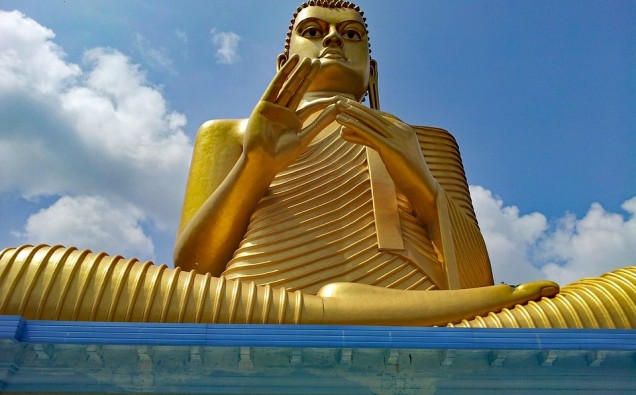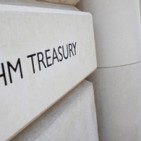- Kandy
The city was formerly named ‘Senkadagalpur’ after a hermit named Senkada who resided there. Many of the Sinhalese locals call it ‘Mahanuqra’, which translates as ‘Great City.’ However, its present name ‘Kandy’ was derived from the word ‘Kanda’ which means mountain. Indeed, Kandy lies on a mountainous terrain which made it difficult for enemies to invade.
Scholars argue that the city was founded by King Vikramabahu III during the 14th century. It was the last capital of the old Sri Lankan dynasty of Kings, until it fell into the hands of the British Empire during 1815. Today the city remains the capital of the central province of Sri Lanka and both an administrative and a religious hot-spot.
Kandy is a hugely famous location for tourists because of the following three main reasons: The Peradeniya Botanical Gardens, The Temple of the Sacred Tooth Relic of the Buddha, and it is also home to festivities such as the Esala Perahara.
- Anuradhapura
According to ancient History, Anuradhapura was made the capital of the Sinhalese kingdom by the first reigning Sri Lankan King, Padukabhaya. The layout of the city is described in the epic Pali poem the Mahavamsa. The city is described as having been built with a cemetery, execution ground, chapel and house of sacrifice all set into place.
Anuradhapura has been established since the 4th Century. As evidenced by relics dug up in the area from the Iron Age, the city has been inhabited for many millennia. It has been a great centre for religious and political power. Due to architectural advancement such as a moats and raised walls, its inhabitants were able to survive for eons. It is now an international world heritage site.
Present day Anuradhapura is the capital of the North Central Province in Sri Lanka. Notable sites to see in the city include: the famous sacred bodhi “enlightenment” tree, the monastic buildings ruins, and its various Stupas (Buddhist shrines).
- Jaffna
According to historical sources, the word Jaffna is of Tamil descent, and translates to meaning ‘port of the lyre.’ However, other Sri Lankan scholars state that Jaffna is known in Tamil as Yalpaanayanpaddinam, as found inscribed on copper plate relics discovered in the area.
Jaffna is the capital of the Sri Lankan province which stands under the same name. Within the region, discoveries have been made of potteries and clay artefacts from between the 2nd to 5th century, showing that the city was at least inhabited since then. The city has been home to the Pandyan Empire before it was ambushed by Muslim Invaders. It was also ruled over by the Portuguese before the colonial period.
Places of interest in the city consist of: the Jaffna Dutch Fort, the Hindu Temple at Nallur Kandaswamy Kovil, and the Sangiliyan Temple to name a few.
- Colombo
Colombo is the colonized name of the city, in Sinhalese it is Kolamba, or Kolumpu as it is known in Tamil. The name ‘Colombo’ was first implemented by the city’s Portuguese rulers in 1505, taken from the Sinhalese name Kolon thota, which translates to ‘port of the river Kelani.’
As the city possesses a naturally developed harbour, it was a famous port for Greek, Indian, Persian, Arab, Chinese and Roman traders around 2 millennia ago. Arabs even began to integrate and settle into the country at this time because the location helped their businesses to grow and prosper.
Colombo, located in the country’s Western Province, has the largest population in Sri Lanka as of today (over 5.9 million) and it is the country’s commercial capital. Must see landmarks to visit in the city are: Gangaramaya Temple, St Anthony’s Church, Independence Square and Jami Ul-Alfar Mosque.
- Yapahuwa
Yapahuwa was built on a huge granite rock rising almost 100m above the ground of the surrounding low lands in North Western Sri Lanka. The former name of this destination of Buddhist descent is Yapawwa, thus its original name has been somewhat distorted.
The rock fortress of Yapahuwa was built by King Buvanekabahu I in 1273. Many traces of ancient battle defences are still evidenced in the surrounding location. Indeed, the rock face wall gave the city a great tactical advantage in battle if invaders were to attack. Yapahuwa sufficed itself as the capital of Sri Lanka.
Some of the biggest showpieces that remain on display from the King’s reign in the city are: a huge, ornament stairwell, a Stupa (Buddhist Temple) and enclosed Bodhi cage. The surrounding region is still marked by many large boulders and has a rocky terrain. Also to see are some caves and a shrines with images of the Buddha.
- Galle
Galle was previously known as Gimhathiththa. However, a Muslim scholar by the name of Ibn Batuta had called it by the name Qali during the 1500s. The city has a natural harbour, which faces out to the Indian Ocean.
It is believed that Galle was probably used as a cinnamon port for most of South Asia from the 1400s. The city was invaded by Portuguese ships in 1502. The city was majorly fortified by the Dutch during the 17th century, when they took over rule before the British took charge of the country in 1796.
Galle is situated as the capital of its self-titled district. The city runs as the administrative capital of the southern province of Sri Lanka. Unmissable places to visit in Galle are: The Galle Harbour and Forty, St. Mary’s Cathedral and the Shiva Temples.
- Kurunegala
Kurunegala’s name derives from the Sinhala name meaning ‘Elephant rock’. Indeed, Kurune translates to ‘tusker’ or an ‘elephant’ which has prominent teeth. Whereas ‘gala’ simply means ‘rock.’
Kurunegala’s ascension as an old capital of the island began as far back as the 12th Century. The city’s ruler at this time was King Parakrama Bahu III. He was famous for bringing back the tooth relic which was stolen from Yapahuwa kingdom by an ascendant of the Jaffna Kingdom to Pandyan country.
Kurunegala sits in the present day Northern Western Province of Sri Lanka. The city is famous for its royal complex which hosts a series of archaeological remains. Also worth seeing are Kurunegala Lake, and the city Clock Tower.
- Negombo
The city’s name Negombo is a Portuguese altered version of its Tamil original Neerkolombu. The city has a coastline of its own and its inhabitants are known as Negombians.
The reign of the Jaffna City Kings built a fort around Negombo and other surrounding cities to keep them safe during the Medieval period. The Portuguese colonizers invaded during the 16th Century and turned many of the region’s predominantly Hindu tribes towards Catholicism. After the Dutch rule which came later in the same century, the East Indian trading company took over the island in the late 1700s.
Negombo is situated in Sri Lanka’s Western Province. Must see destinations of the port city are: the fishing village, Dutch Fort, St. Mary’s Church, the Sandy beaches, Hamilton Canal, the Clock Tower, and Negombo Lagoon!
- Kalmunai
Also known as Kalmune in Sinhalese, this is another major historic city of Sri Lanka. As of the country’s last general consensus it has a Muslim majority population, although many Sri Lankan Tamils, Sinhalese, Burghers and Moors still reside in the area.
During the reign of the Portugese in the 17th Century, the Muslim population of Colombo were exiled by their rulers. They sought refugee status in Kandy before re-locating to Kalmunai. Kalmunai was a majority farming region owned by King Rajasinghe II.
Kulmani has can be found in the island’s Eastern Province, within the Ampara District. The city presently has a population over 100, 000. If in Kalmunai, you must see the city’s beautiful beaches and rural, lush farming landscapes.
- Vavuniya
Vavuniya is a name taken from its Tamil original Vanni, and it remains as Vavuniya in Sinhalese. It is a convenient by-pass route for accessing the other cities within the Northern Province.
Between the 5th and 13th centuries what is now known as Vavuniya was inclusive of the Rajarata. After this the area was ruled over by the Vanniar, who paid tribute to the Jaffna Kingdom before it came under colonial rule. The city was then taken over by Portuguese, Dutch and British control.
This city is the main settlement area of its self-titled District. The Headquarters of the Sri Lankan Army are located inside the city. It is also home to a railway station for the country’s northern line and Vavuniya airport as well, which is used by the island’s national Air Force.
Manisha Bhanot

















